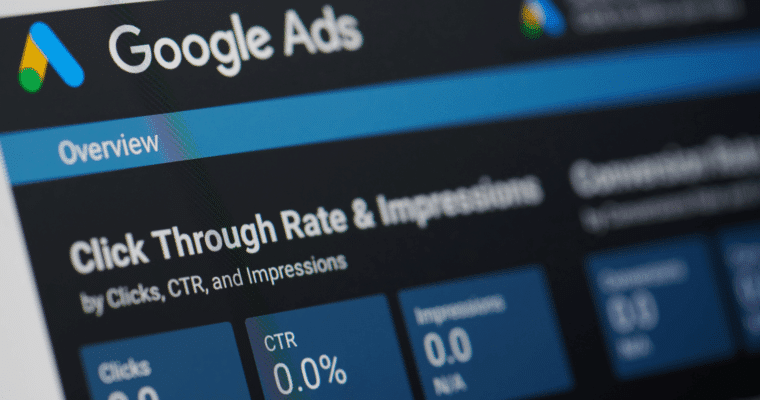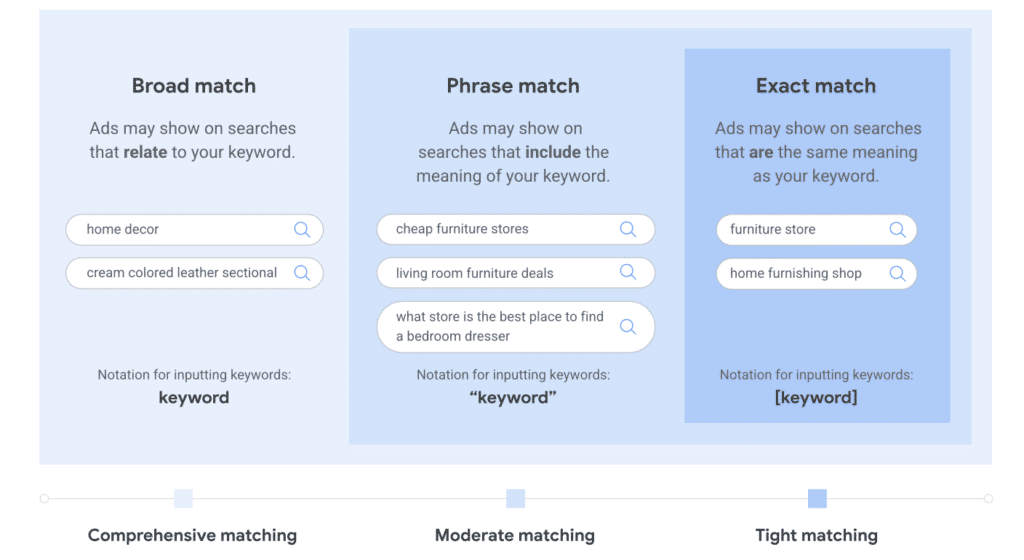Boosting Your ROI: A Guide to Improving Your Google Ads
 Reading Time: 5 minutes
Reading Time: 5 minutes
Stepping into the world of Google Ads can seem like a daunting task for any small business owner. With a limited budget, the pressure to generate a ongoing return on investment (ROI) is even greater. This article is here to simplify the process, offering actionable steps to help improve your Google Ads and ultimately boost your ROI.
Table of Contents
Maximising Your ROI with Google Ads
Throw away the common misconception that securing a win in the Google Ads arena is all about being the highest bidder. Instead, shift your focus to creating ads that are of stellar quality, specifically relevant to your intended audience. An outstanding ad will engage your audience more effectively, prompting higher click-through rates (CTR) and ultimately over time will help to increase your conversion rate.
There are three crucial areas you should concentrate on when aiming to amplify your ROI. Firstly, the relevance of your keywords to your business and target audience. Secondly, the overall quality and persuasiveness of your ad copy. And lastly, the user experience on your landing page often acts as the deciding factor for potential customers.
By honing in on these areas, you’re not just throwing money at Google Ads and hoping for the best; instead, you’re strategically investing in ads that will garner more attention, clicks, and conversions, all of which contribute to a healthier ROI.
Keyword Matching Strategies
Mastering the art of keyword matching is a pivotal part of optimising Google Ads. This strategy revolves around how you choose to match your keywords to the search terms your potential customers use.
Google Ads offers three core keyword matching options – broad match, phrase match and exact match. Each comes with its own benefits and drawbacks. Broad match, for instance, offers a wide reach but may attract irrelevant clicks. On the other hand, exact match targets specific searches but may limit your reach. The image below explains this in more detail.

The above image is a screenshot taken from Google’s help centre and it explains its keyword matching options.
It’s about striking a balance that fits your business needs. A combination of different match types can often be the key to a balanced and successful campaign.
Regularly reviewing the performance of your chosen keywords and their match types is vital. This allows you to identify what’s working and what might need tweaking. Whether you’re narrowing down your targeting with more precise match types or expanding your reach with broader options, remember the importance of relevance. The more relevant your keywords and their match types are to your business and audience, the more successful your Google Ads campaign will be.
How to Choose the Right Keywords
Uncovering the perfect keywords for your campaign is a task that requires your careful attention. Start by putting yourself in the shoes of your potential customers and imagining the search terms they may use to find your offerings.
A fantastic tool at your disposal is Google’s Keyword Planner, which can reveal a range of popular search terms related to your business. However, don’t be tempted by quantity over quality. The goal here is to select keywords that align with both your business objectives and the needs of your target audience, so be specific in your chosen keywords.
If you have historic data from older ad campaigns, this can be very useful in helping to choose quality keywords to use. By taking this data driven and personalised customer centric approach, you’re ensuring that keywords you use will help to generate an ongoing ROI.
Optimising Your Ad Copy
Crafting compelling ad copy can act as a magnet to attract your potential customers. It’s your opportunity to not just inform, but to entice, engage and convince. Start things off by underlining your unique selling propositions. What makes you stand out from the crowd? Make it clear and make it prominent.
Then, make sure your copy includes a compelling call to action. It’s crucial to guide your potential customers towards the desired action, whether that’s signing up for a newsletter, buying a product, or booking a service.
Additionally, it’s wise to pre-empt any potential reservations your customers might have. Are they worried about the price or delivery time for example? Highlight your competitive rates and express shipping options. Are they concerned about the quality? Provide reassuring evidence of your products’ or services’ worth.
Make the most of the tools Google Ads offers to fine-tune your approach. The responsive search ads feature, for example, allows you to test various headlines and descriptions to discover which combinations resonate best with your audience. This feature takes the guesswork out of the equation and lets data guide your decisions, leading to more engaging and effective ads.
In essence, optimising your ad copy is about balancing art and science. You need the creativity to write engaging copy, and the analytical skills to test, refine, and perfect it. A strategic approach to ad copy optimisation can pave the way towards higher click-through rates, more conversions, and ultimately, a higher ROI.
Landing Page Optimisation
The final stop in your customer’s digital journey, the landing page, carries significant weight in their decision-making process. It’s the difference between a potential customer completing a purchase or navigating away. A well-tuned and optimised landing page can effectively tilt the balance in your favour, converting potential interest into definite action.
A golden rule of thumb to follow is maintaining consistency between your advert copy and the landing page. A disconnect here can confuse your visitors, so ensure the transition is seamless. Incorporating key elements from your advert into your landing page design and copy creates a continuity that aids in customer conversion.
The above image is a blurred screenshot from Google Analytics, showing data from customer behaviour of a website
The power of simplicity should never be underestimated when it comes to the layout of your landing page. An easy-to-navigate, intuitive design guides your customers, making it effortless for them to take the desired action. Minimising clutter and focusing on the key message helps in keeping their attention riveted where it matters most.
A significant portion of online traffic comes from mobile devices, making mobile-friendliness a non-negotiable aspect of your landing page. Ensuring your landing page loads quickly and looks appealing on various screen sizes can make all the difference to your conversion rates.
Last, but certainly not least, your landing page should guide visitors towards a clear call to action. A persuasive and prominent CTA button or link can make the action you want your visitors to take unmistakable. After all, the quicker they can click that ‘Buy Now’ or ‘Sign Up’ button, the better your chances of securing that conversion.


